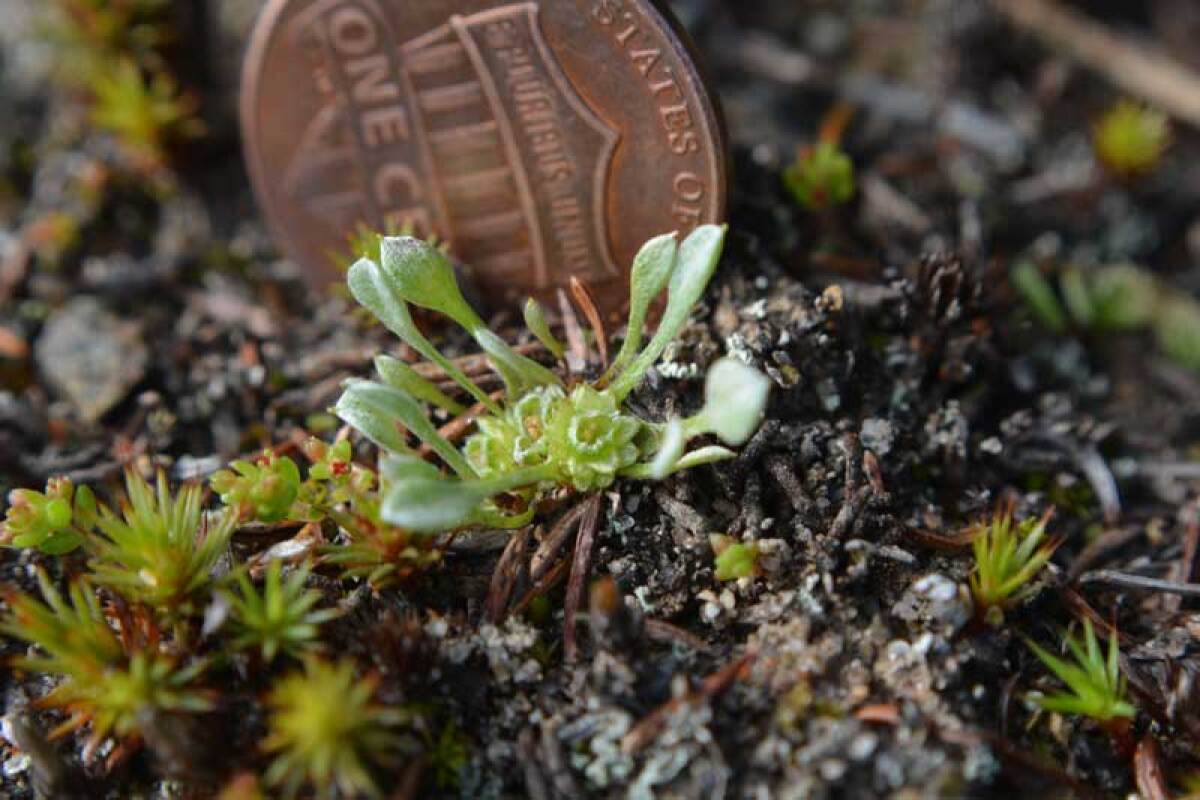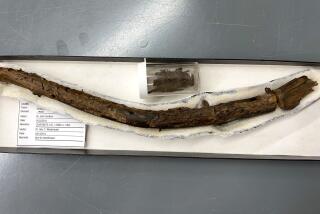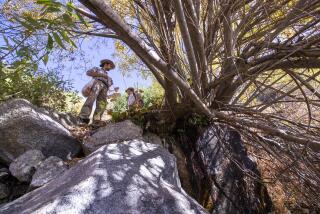A plant smaller than a penny is rediscovered on a Lompoc military base. Here’s why we should care

- Share via
Researchers have rediscovered a California plant species that remained elusive for years because it’s so small that five can fit on the face of a penny.
Thousands of Santa Ynez groundstars — with their clusters of furry, white, spoon-shaped leaves — were found at the Vandenberg Space Force Base near Lompoc in Santa Barbara County, the only place on Earth the species is known to exist.
“It really is currently only known from this one very small location,” Kristen Nelson, rare plant program manager with the California Native Plant Society, said in an interview Monday.
Nelson and other researchers used historical records to find the Santa Ynez groundstars last month.
With so few in existence, and most likely concentrated in one area, the plant is susceptible to being wiped out by a single catastrophic event, according to researchers, who hope this discovery and study will help protect the species.
Roughly 34% of plants in the United States are at risk of extinction due to habitat destruction, climate change or invasive species, according to a February report from NatureServe, a nonprofit conservation group. It is a frightening statistic that researchers pointed out in announcing the Santa Ynez groundstar’s rediscovery.
The group discovered the plants spread across a rich, carpet-like setting of soft mosses and lichens in an area measuring 500 feet by 500 feet. They failed to find the plants outside of that patch.
“You’ve got little plants here and little plants there in this overall area, that’s just, you know, really just a postage stamp on the landscape,” Nelson said.
The plant has no effective method to disperse its seeds; other species have seeds that can catch a ride on the wind, on an animal’s fur or in a bird’s stomach.
The Santa Ynez groundstars were growing alongside other small ephemeral plants during a brief window in spring, said Matt Guilliams, a botanist with the Santa Barbara Botanic Garden.
“We needed to lay on our bellies with a hand lens to observe the plant,” Guilliams said in an email. “Once you’re down at the scale of the groundstar, however, it’s easy to love this little plant.
“It’s a true privilege to be there at just the right time to see them,” he added.
The discovery raises the question of why we should care about the survival of a single tiny species. Nelson uses the metaphor of a Jenga tower: If you remove a few blocks, the tower may remain standing but is weakened.
“We’re weakening ecosystems by losing species at a rate that we can’t even keep up with documenting,” Nelson said. “Why should we care? Why should we conserve this one tiny little species? Well, we have to draw the line somewhere.”
The Santa Ynez groundstar was first plucked by a botanist in 1929 in approximately the same location, and the sample was pressed and stored, but the plant’s unique rosette structure and leaves were never studied extensively. Another sample was found there in 1995. But it wasn’t until 2004 that James Morefield of the Nevada Natural Heritage Program described the plant in a scientific publication.
At the time, Morefield wrote, “because of its limited geographic range and dispersal ability, and its location in a region of relatively dense human population with a strong potential for future impacts,” the Santa Ynez groundstar “should be of immediate conservation concern.”
More to Read
Sign up for Essential California
The most important California stories and recommendations in your inbox every morning.
You may occasionally receive promotional content from the Los Angeles Times.











